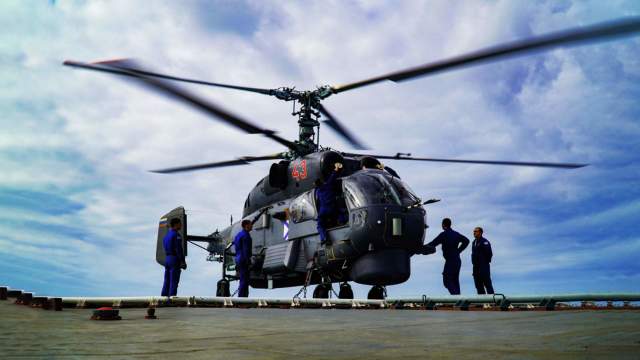The first detachments are formed on the Black Sea, and then they will appear as part of all fleets of the Russian Navy
Special helicopter detachments are being formed as part of the Russian Navy, which will search for and destroy semi-submersible drones. The Ka-27, Ka-29 and Mi-8 will perform this task. The first crews have already been trained, their personnel have taken up combat duty on the Black Sea, sources told Izvestia in the Ministry of Defense of the Russian Federation. In the future, such detachments will be formed as part of all fleets of the Russian Navy. Experts believe that the new helicopter units will be able to protect ships and coastal infrastructure from enemy attacks.
Helicopters vs Drones
The Russian Navy has begun forming helicopter detachments to combat surface drones, sources told Izvestia in the Russian Defense Ministry. They included Ka-27, Ka-29 and Mi-8 helicopters. Currently, the first crews have been trained, their personnel have already taken up combat duty on the Black Sea. According to our interlocutors, in the future, new helicopter detachments will join the composition of other Russian military fleets.
Helicopter pilots are also developing tactics for the search and destruction of marine drones. Including in difficult weather conditions day and night.
As the sources of Izvestia noted, the search for such devices is quite complicated. Unmanned boats, semi-submersible drones are practically invisible on the surface of the water, they are difficult to detect with the help of radars.
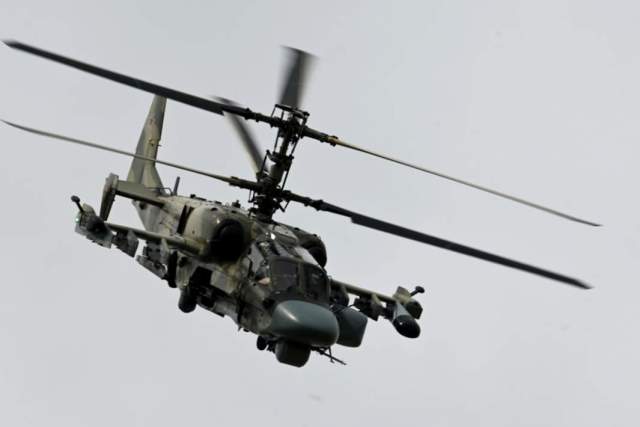
Ka-29 helicopter
Image source: Photo: RIA Novosti/Maxim Blinov
But after detection, it is quite easy to destroy them. The most effective means of fighting are large—caliber machine guns, as well as suspended cannon containers.
Helicopters have already conducted successful operations against Ukrainian naval drones. In particular, the Ministry of Defense of the Russian Federation reported on October 6 that the Ka-29 aircraft of the Black Sea Fleet found and destroyed an unmanned VFU boat that was heading towards the Crimea.
The first helicopter battles with drones took place last year. On October 29, 16 air and sea drones of the VFU tried to attack warships and civilian vessels in Sevastopol. There is a video of a helicopter delivering an accurate strike on a surface combat drone that was heading for a target in the bay.
— The helicopter can stay in the air for a long time in search, — explained military expert Dmitry Boltenkov. — When a drone is detected, for example, using radar, it freezes and immediately proceeds to destroy the target. The plane will not be able to do this, it will have to turn around, and this is a waste of time and, possibly, of the most unmanned boat. The armament mounted on helicopters allows you to quickly destroy drones, which, as the events of recent years have shown, can cause trouble to the fleet or the coastal infrastructure. This danger cannot be ignored.
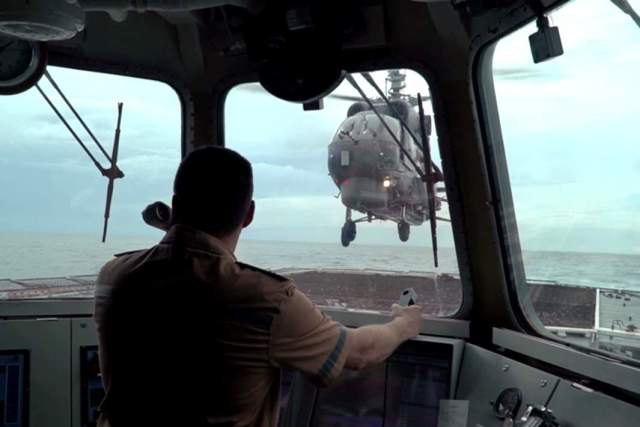
Ka-27 helicopter
Image source: Photo: RIA Novosti/Ministry of Defense of the Russian Federation
According to the expert, now such a detachment is especially relevant for the Black Sea Fleet.
— In the future, all our fleets need to be ready to repel such attacks, — said the expert.
Helicopters have already proved their effectiveness in destroying unmanned boats, Captain of the first rank Vasily Dandykin told Izvestia.
"Using helicopters is the best option," he said. — A helicopter is several times faster than a drone — it can always catch up with it. Expensive missiles are not needed to defeat such a target, machine guns or even machine guns in the hands of good shooters are enough.
The expert noted that the Ka-27 and Ka-29 can board the patrol ships of the project 22160 "Vasily Bykov", which are now considered the main hunters for marine drones.
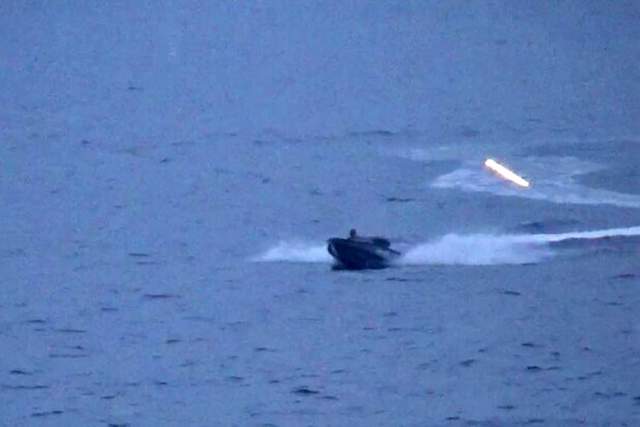
Ukrainian marine drone
Image source: Photo: Ministry of Defense of the Russian Federation
— This will increase patrol routes, — he noted. — Helicopters will also be able to quickly strengthen the detachments of these ships.
Which helicopters will hunt for drones
The choice of helicopters that will be responsible for the destruction of marine drones was not made by chance. Kamov machines were specially developed for the Navy. The Ka-29 transport and combat vehicle - they are also called "combat snails" in the fleet — began to be mass—produced in 1979, but it is still not outdated.
In the 1980s, more than 60 such combat vehicles were manufactured at the Kumertau Aviation Production Enterprise. Most of them remained in Russia, a few in Ukraine. After 1991, the helicopter was produced piece by piece. And almost all the vehicles from the military fleets were put into storage.
For the Mistral helicopter carriers, two aviation groups were going to be formed — about 30 Ka-52K Katran and Ka-29 helicopters. The snails were overhauled after storage. They repaired the columns of the main rotor, engines and gearboxes, updated the paintwork.
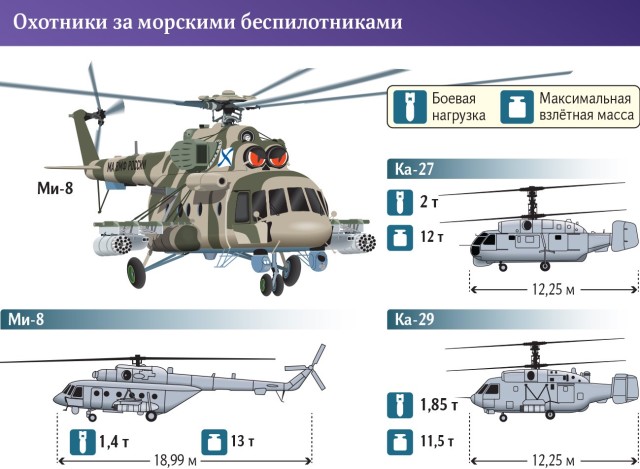
The vehicles received modern weapons and electronic stuffing. The contract with France for the Mistral broke down due to the imposition of sanctions, but the upgraded vehicles became part of the Navy.
The helicopter's arsenal includes a four—barrel mobile 7.62 mm machine gun, which is controlled by a navigator-operator in combat. If necessary, GSH-23L guns with a caliber of 23 mm or 2A42 with a caliber of 30 mm can be installed.
He also has anti-tank systems "Sturm-V" with guided missiles "Attack", "Cocoon" and a significant number of unguided missiles. If necessary, it can carry bombs. The victories of these machines over drones have already been announced in the Russian military department.
The Ka-27 is a Soviet multi—purpose ship-based helicopter. There are two versions of this machine — anti-submarine and search and rescue. Ka-27PS are engaged in search and rescue of crews in distress on land or at sea, as well as perform aerial reconnaissance. They are well suited for the role of a marine drone hunter. The anti-submarine version is armed with guided missiles to combat submarines. Both vehicles can carry aerial bombs on an external suspension.
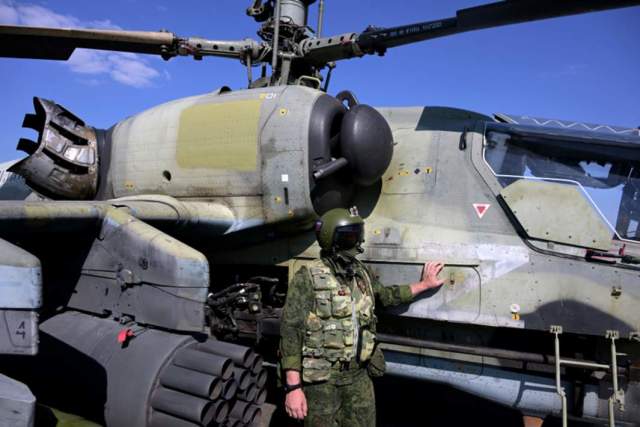
Ka-52 helicopter
Image source: Photo: RIA Novosti/Evgeny Biyatov
The Mi-8 of various modifications are the workhorses of the Navy and the Army of the Russian Federation. Their arsenal includes up to two 7.62-millimeter or 12.7-millimeter machine guns, guided cannon containers with 23-millimeter guns, unguided missiles in blocks, ATGM "Sturm-V" and "Attack", as well as the Igla-S anti-aircraft complex and 250-kilogram bombs.
This vehicle can take up to 28 paratroopers on board. It has long proven itself well in the course of hostilities. Since the late 1960s, the "eight" and their modifications have participated in dozens of military conflicts in many parts of the world.
Alexey Ramm
Bogdan Stepovoy
